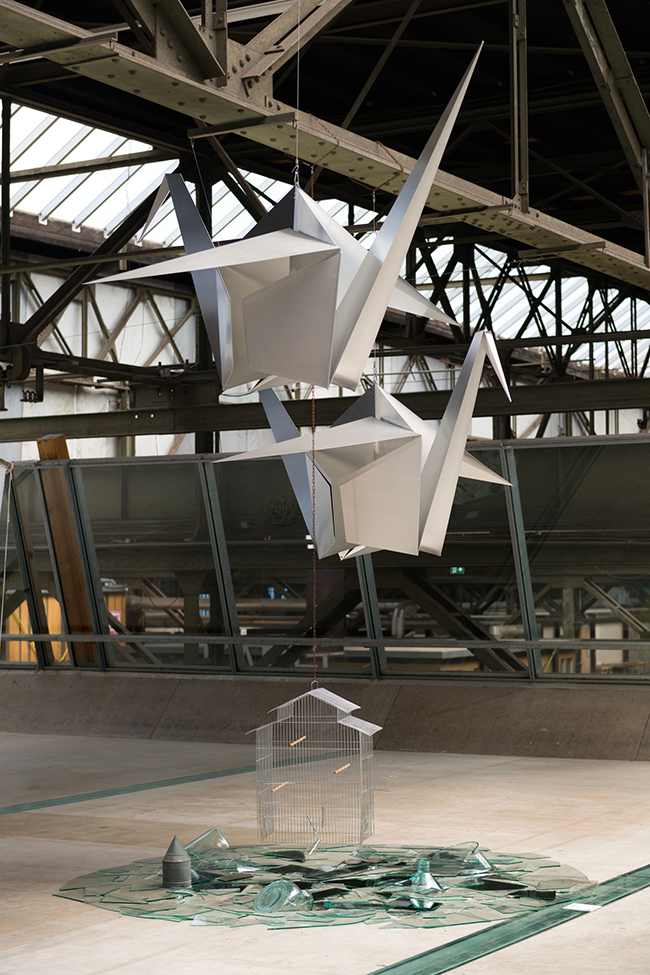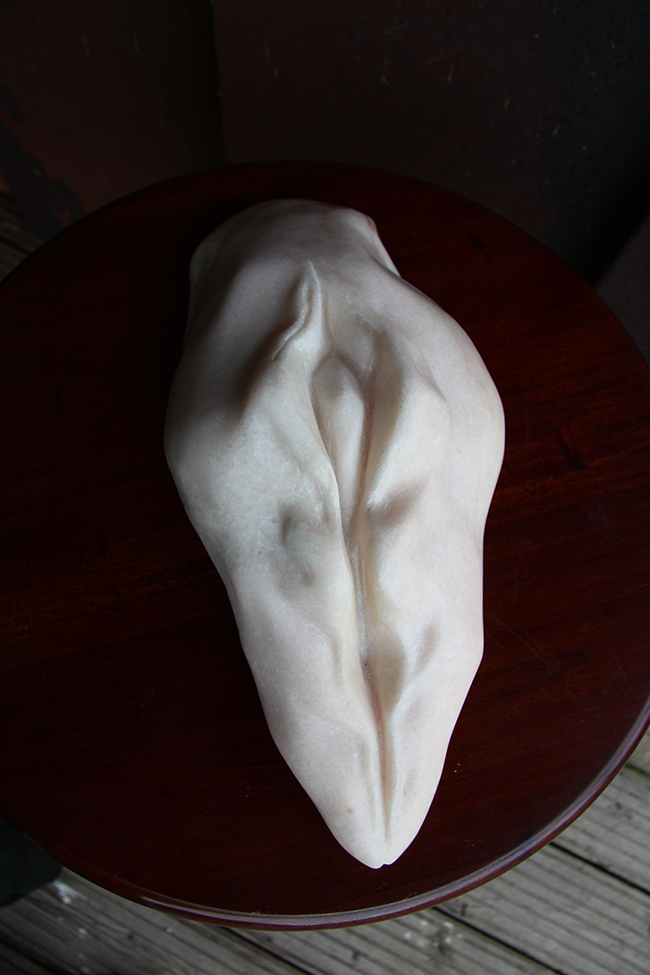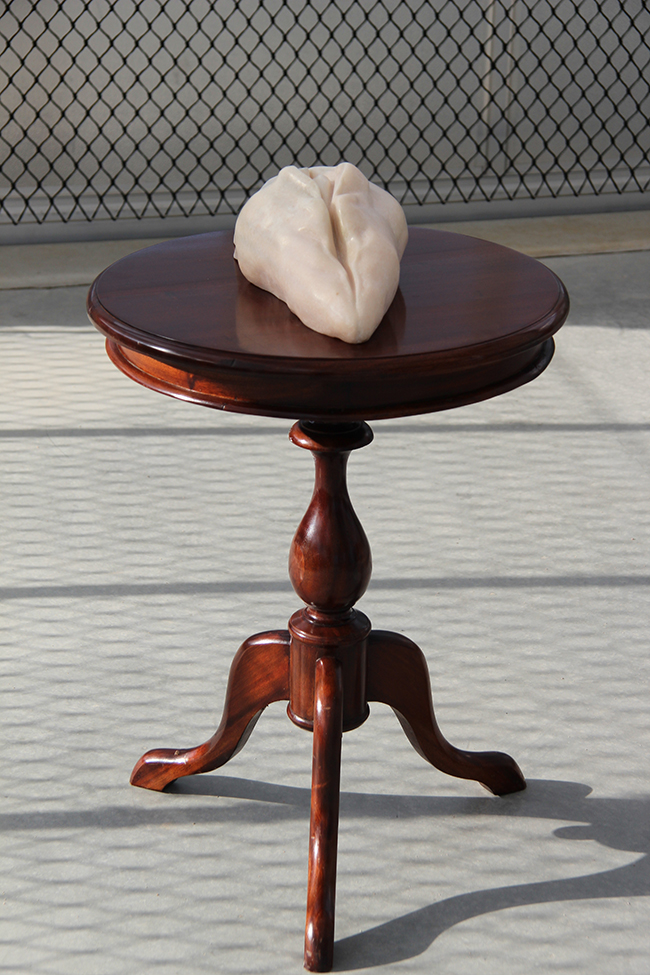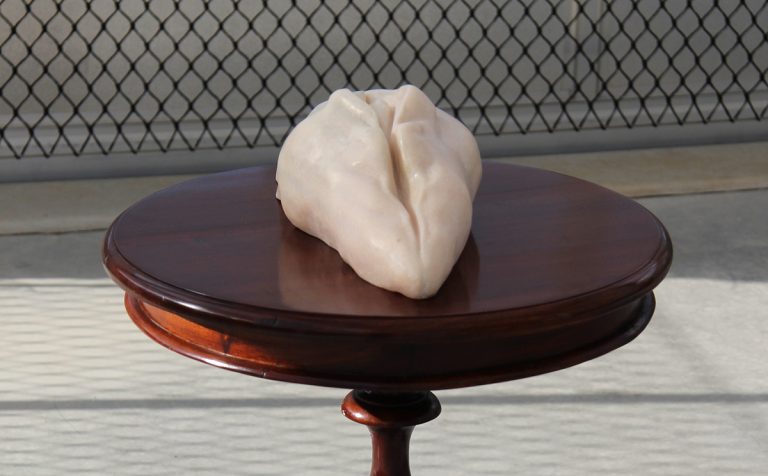Caroline Kampfraath, a Dutch sculptor, has built her artistic practice around the creation of thought-provoking, thematic installations. She exhibits her work abroad, where audiences are drawn to the enigmatic and surreal qualities of her pieces. For Kampfraath, each project demands its own distinct material, a commitment that often challenges her creatively and technically. Her portfolio includes everything from resin and wool to lead and bronze, combining these materials in ways that feel at once unexpected and cohesive.
Symbolism plays a significant role in her visual language. Engorged veins, dead dogs, and kidney-shaped dishes are just a few of the recurring elements that lend her work a surreal and sometimes unsettling atmosphere. Kampfraath’s art often explores the tension between expectation and reality, reflecting on the illusions that shape human experience. Everyday objects like bottles and tables take on new meanings in her hands, representing both vulnerability and insignificance.

In Fly to Me, My Enemy, Caroline Kampfraath turns her focus to the lingering impact of major historical events on subsequent generations. This large-scale work, measuring 240 x 240 x 420 cm, is composed of aluminum, glass, and photosheets. The installation is both imposing and delicate, using its towering structure to command space while the photosheets subtly invite closer inspection.
The piece examines how the stories of the past evolve—or dissolve—when the individuals who lived through them are no longer present to share their experiences. Kampfraath’s use of photosheets, layered and distorted within the glass, creates an ethereal quality. It’s as if the memories themselves are fading, leaving behind only fragments that future generations struggle to piece together.
The material choices here are central to the narrative. Aluminum, with its industrial and resilient nature, suggests permanence and strength. Glass, on the other hand, is fragile, prone to shattering under pressure. Together, these elements symbolize the duality of memory: robust yet fragile, enduring yet easily lost. The work challenges viewers to consider how history shapes identity and how much is left behind in the silence of forgotten stories.
The title, Fly to Me, My Enemy, adds another layer of complexity. It implies confrontation, reconciliation, or perhaps the inseparability of opposing forces. Kampfraath seems to suggest that even when historical wounds fade, they remain embedded in the collective psyche, influencing relationships and perspectives across generations.


In another work, Geisha, Kampfraath interrogates societal attitudes toward female sexuality and its role in defining cultural values. The piece consists of a table and pink marble, measuring 50 x 50 x 60 cm. Despite its modest size, Geisha carries significant emotional and conceptual weight.
The smooth, polished surface of the pink marble immediately catches the eye, its texture evoking sensuality and vulnerability. The table serves as both a literal and metaphorical foundation, grounding the work in the context of domesticity and societal structure. Kampfraath’s choice of pink marble—a material associated with delicacy and femininity—further reinforces the themes of the piece.
At its core, Geisha asks unsettling questions about the intersection of pleasure, lust, and abuse. Where does the line lie between empowerment and exploitation? By evoking the image of a geisha, Kampfraath brings historical and cultural baggage into the conversation, forcing viewers to confront uncomfortable truths about how female sexuality has been commodified and controlled across time.
The work’s restrained elegance contrasts sharply with its underlying message, creating a tension that holds the viewer’s attention. The title offers a subtle clue to its meaning, but like much of Kampfraath’s work, the piece resists easy interpretation. Instead, it invites contemplation, pushing us to grapple with our assumptions about culture, gender, and morality.
Caroline Kampfraath’s art often feels like a puzzle, one that requires time and reflection to fully appreciate. Her ability to fuse disparate materials into cohesive artworks is matched only by her skill in addressing complex, layered themes. Both Fly to Me, My Enemy and Geisha exemplify her commitment to challenging viewers, encouraging them to look beyond the surface and engage with the deeper implications of her work.
Kampfraath’s sculptures don’t just demand attention; they demand thought. Through her symbolic language, diverse materials, and thematic focus, she invites us to question the narratives we’ve inherited and the roles we play in shaping the future.

